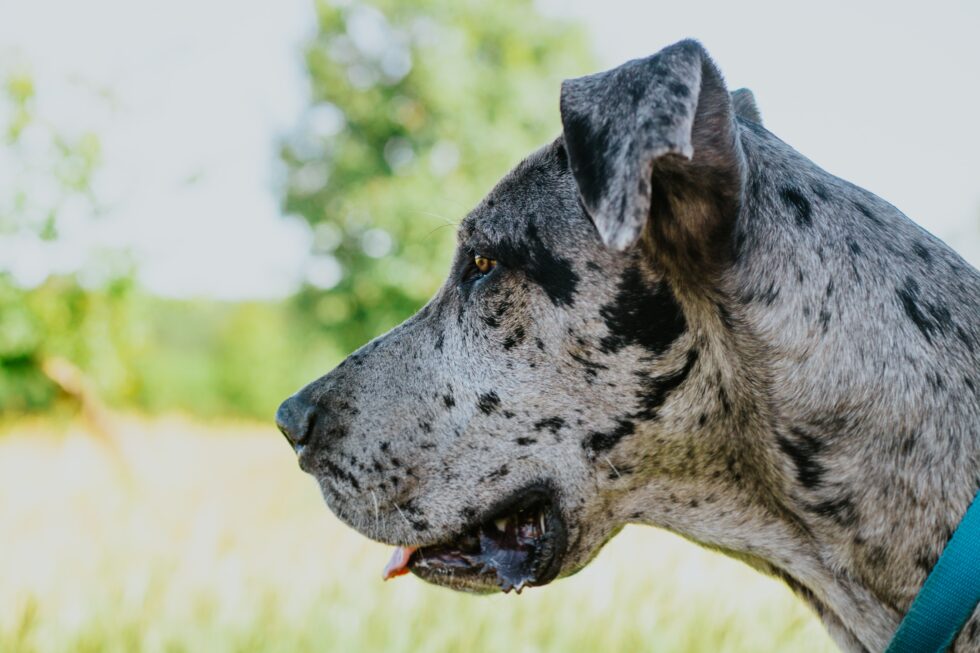Signs of Hip Dysplasia in Dogs

Canine hip dysplasia is a genetic condition that affects the development of the hip joint.
Some types of dogs are more prone to hip dysplasia, but it can affect dogs of any size, age, or breed. This degenerative disease causes great pain and loss of mobility, but early diagnosis and consistent treatment can minimize these symptoms. Although there is no cure for hip dysplasia in dogs, your dog does not need to suffer. Bring your dog to Animal Care Center of Castle Pines. We will prescribe the right treatments to help you manage your dog's hip dysplasia and improve their quality of life.
What Is Hip Dysplasia?
Hip dysplasia is an inherited condition that can occur in one or both hip joints. This genetic disease affects the formation of the hip joint, causing a "loose" or partially dislocated joint. Because the hip joint is not formed properly, the bones move around too much inside the socket. Instead of fitting together snugly, the bones grind and scrape against each other. Hip dysplasia causes painful bone degeneration and joint deterioration, and walking will become more and more difficult for your dog over time.
Hip dysplasia can occur in any breed, although it is more common in larger dogs. Dog breeds prone to hip dysplasia include bulldogs, golden retrievers, Great Danes, Labradors, mastiffs, pugs, rottweilers, and St. Bernards. Because canine hip dysplasia is hereditary, there is no cure. The condition starts in puppies as early as five months old and grows worse as they age. Early diagnosis is the best way to minimize the painful side effects of this genetic disorder.
What Are the Signs of Hip Dysplasia in Dogs?
Ask your veterinarian about canine hip dysplasia if you notice any of these symptoms:
- reduced activity
- decreased mobility
- difficulty jumping
- reluctance to climb stairs
- "bunny hopping" or stiffness when walking
- loss of thigh muscles or extra growth of shoulder muscles
Your Animal Care Center veterinarian will perform a physical examination of the joints and take x-rays to determine whether your dog suffers from hip dysplasia. Because this disease can affect young dogs as well as older ones, it is important to get a diagnosis as early as possible. Growth spurts and weight gain can both aggravate hip dysplasia symptoms in dogs. Diagnosis at a young age will help to prevent complications later in life.
What Is the Treatment for Hip Dysplasia in Dogs?
- Healthy Diet-Animal Care Center offers diet consultation services to ensure your dog eats the best food for optimum health. Puppies that will grow into large dogs who are more prone to hip dysplasia need a special diet to help manage their growth rate. Older dogs will need a special diet that will help keep their joints lubricated and inhibit weight gain.
- Weight Management-Extra weight to carry means extra pressure on the joint and increased pain. Help your dog maintain a healthy weight through proper diet and exercise.
- Regular Exercise-Walking and jogging can help strengthen the muscles around the joint. Make sure your dog gets daily exercise, but avoid going for outdoor walks in damp, chilly weather. Always let your dog move at their own pace, no matter how slow.
- Massage Therapy-Gently massaging the muscles around the joint can help to ease the pain. Your vet can show you the right technique. Applying a hot water bottle or heating pad to the joint for 15 minutes each day can help as well. Always gauge your dog's response-do not use massage or heat therapy if your dog reacts with pain.
- Soft Beds-Comfort is key! Warm, dry, well-cushioned sleeping arrangements relieve pressure on the joints and help alleviate pain.
- Traction-Make it easier for your dog to get around the house by using rugs or mats to provide traction on slippery floors. If your dog sleeps on your bed or on the couch, carpeted stairs will help your pet access those higher surfaces without the pain of jumping.
- Medication-Depending on the severity of the condition, your vet might prescribe medication for pain management.
- Surgery-In some cases, surgical procedures can remediate hip dysplasia in dogs. Talk to your vet about surgical options.
- Regenerative Therapy-Animal Care Center can treat hip dysplasia in dogs through regenerative therapies such as PRP and ESWT. Platelet-Rich Plasma therapy (PRP) accelerates internal healing through platelet injections at the joint. Shockwave therapy (ESWT) uses high-intensity sound waves to reverse inflammation and stimulate the growth of the blood vessels that assist in healing body tissues.
Contact Us
If you have noticed any signs of hip dysplasia in your dog, contact Animal Care Center of Castle Pines to schedule an examination. We offer comprehensive medical care and diagnostics, advanced pain management, surgery, rehabilitation, and many other important services to ensure your pet's health and wellness. Call us at (303) 688-3660 or visit our website to schedule an appointment today. With the right care and treatment for hip dysplasia, your dog can live a happy life free from pain.

